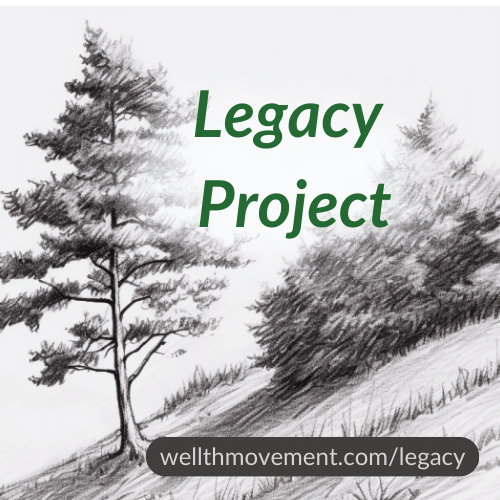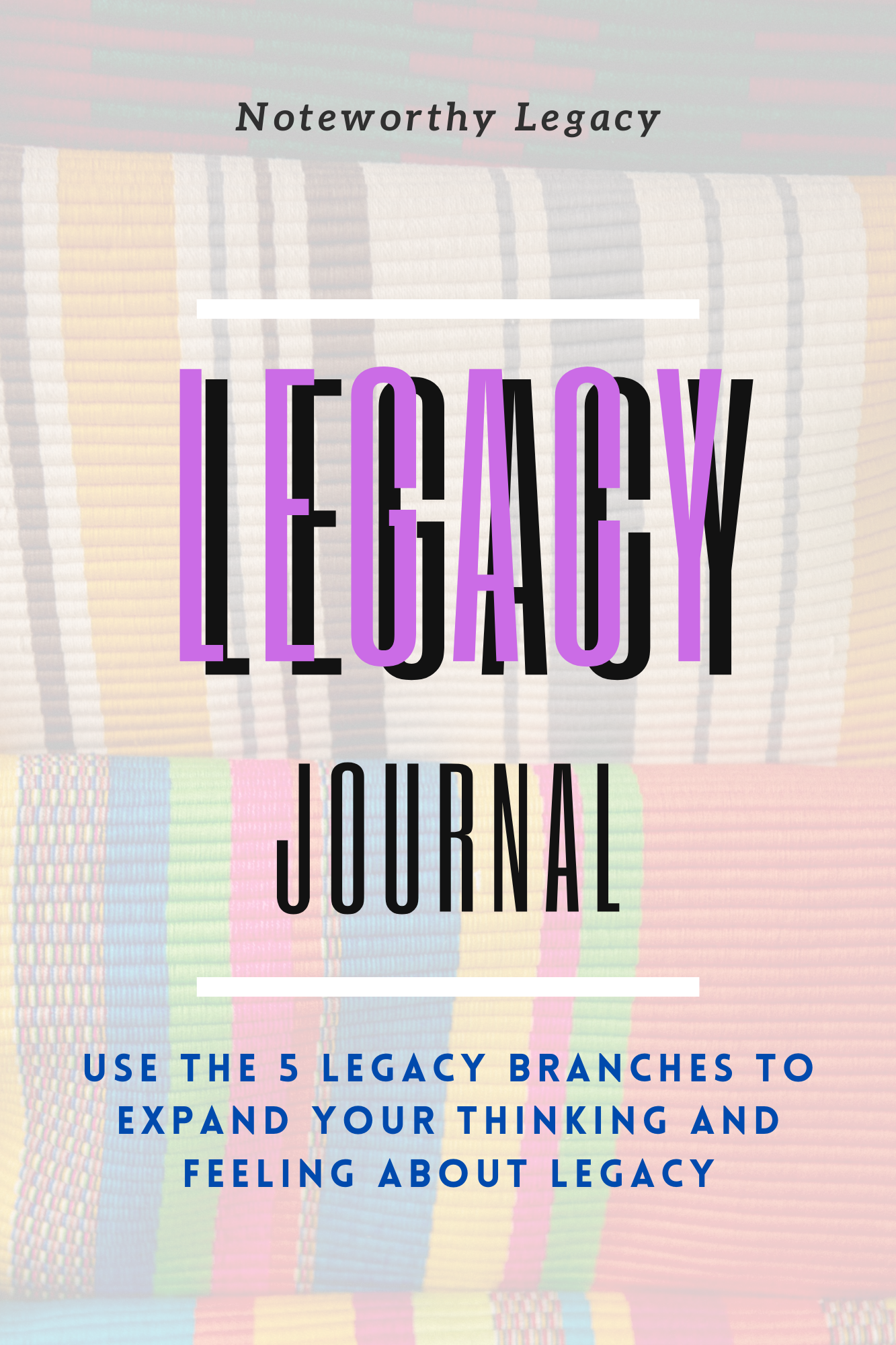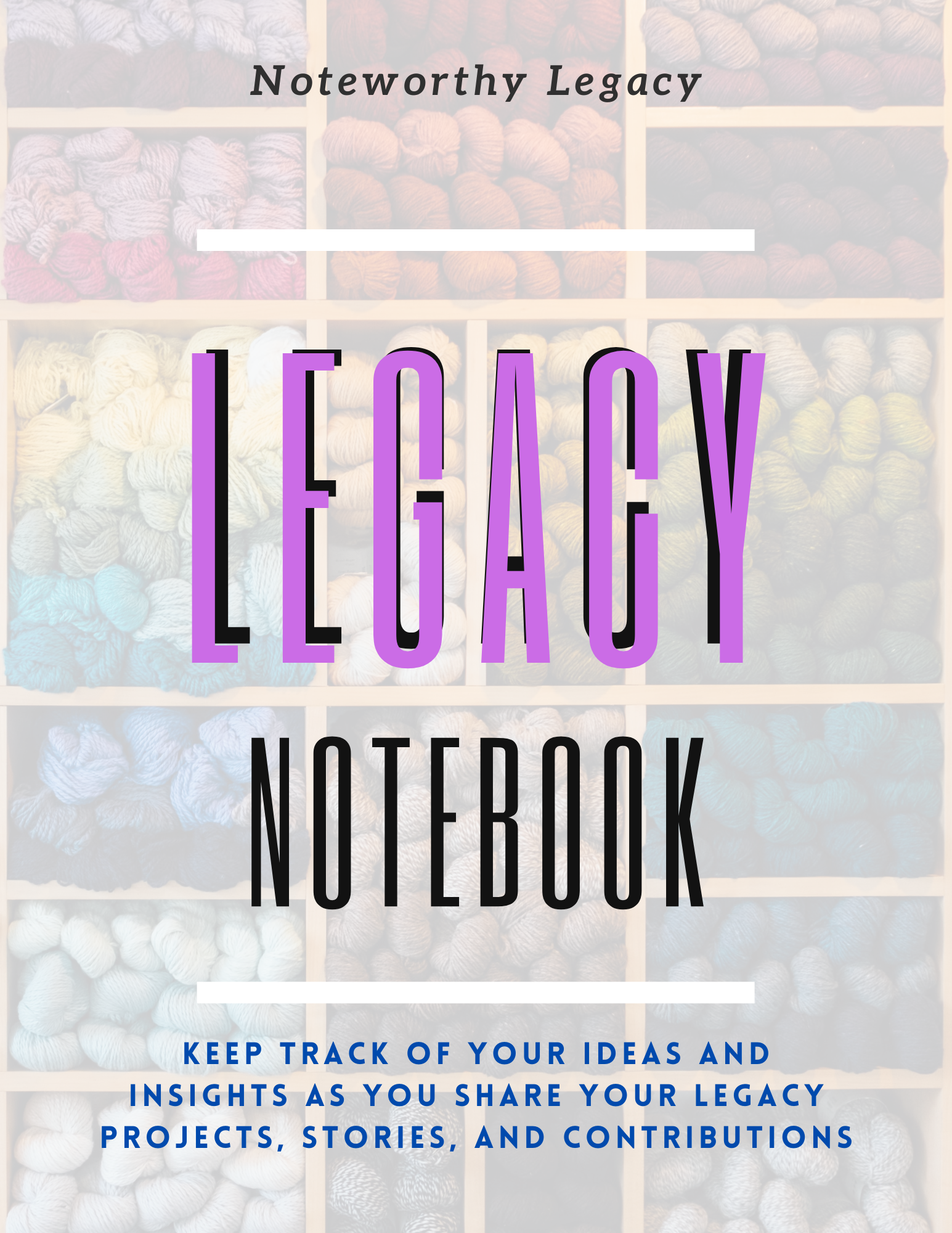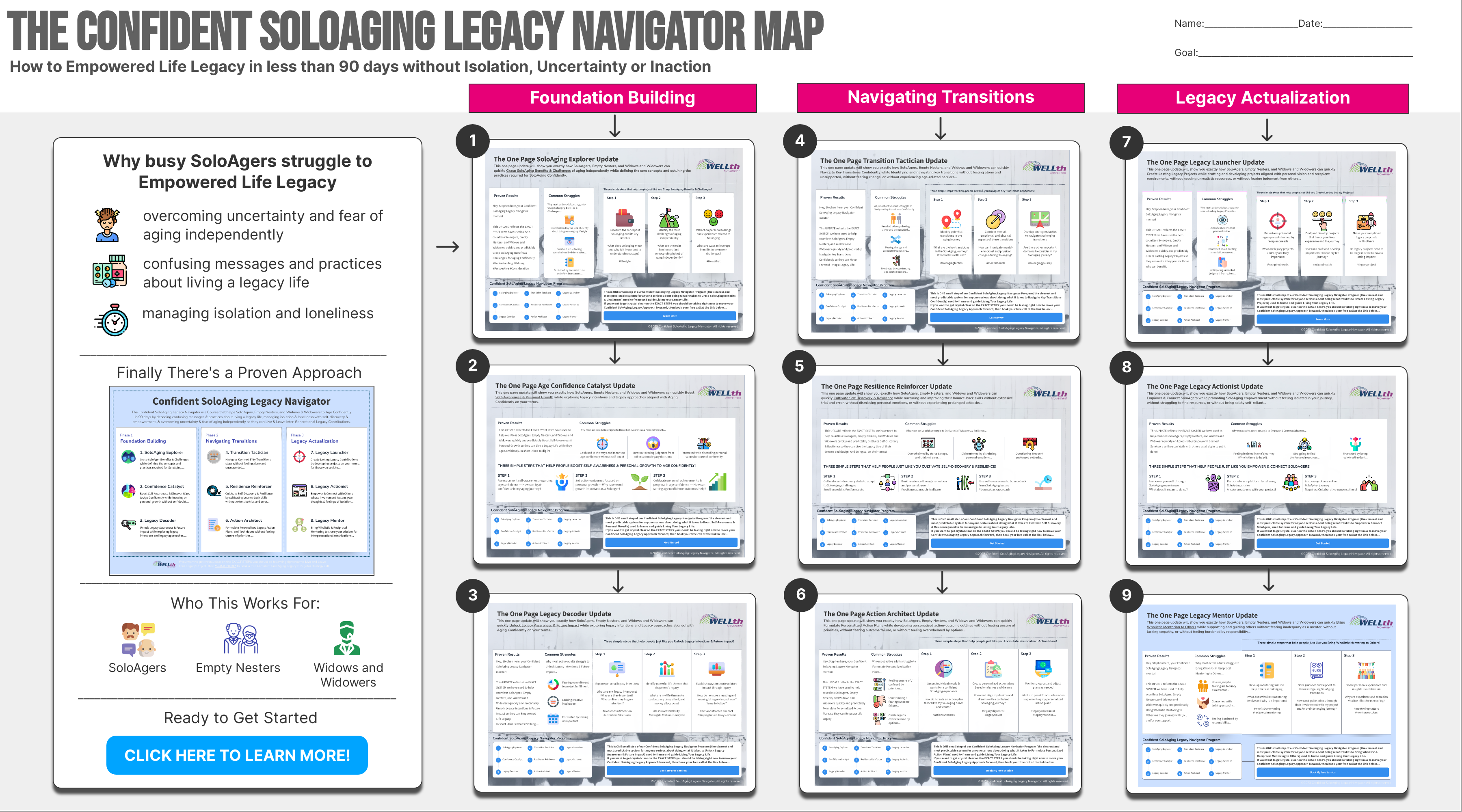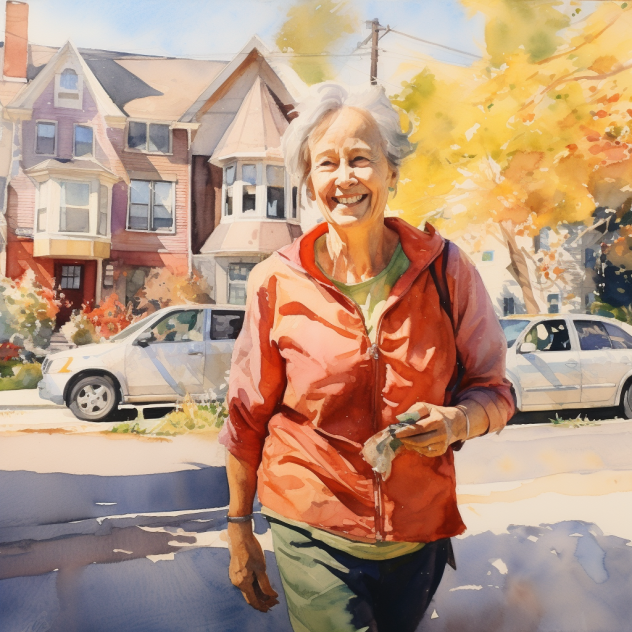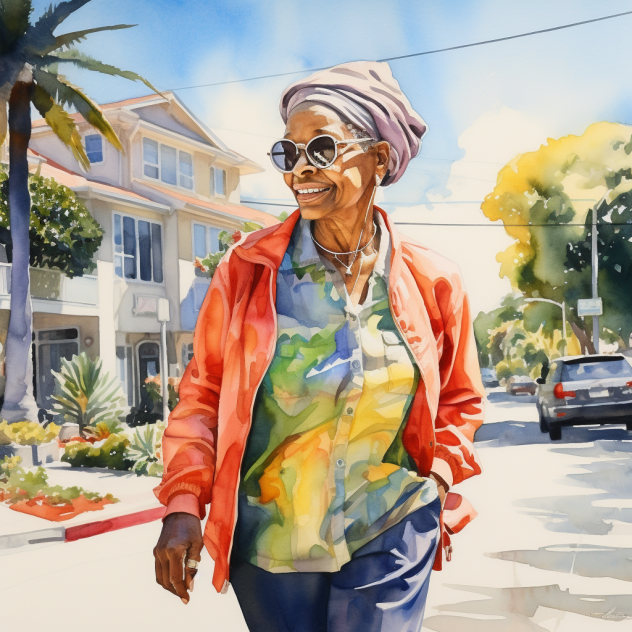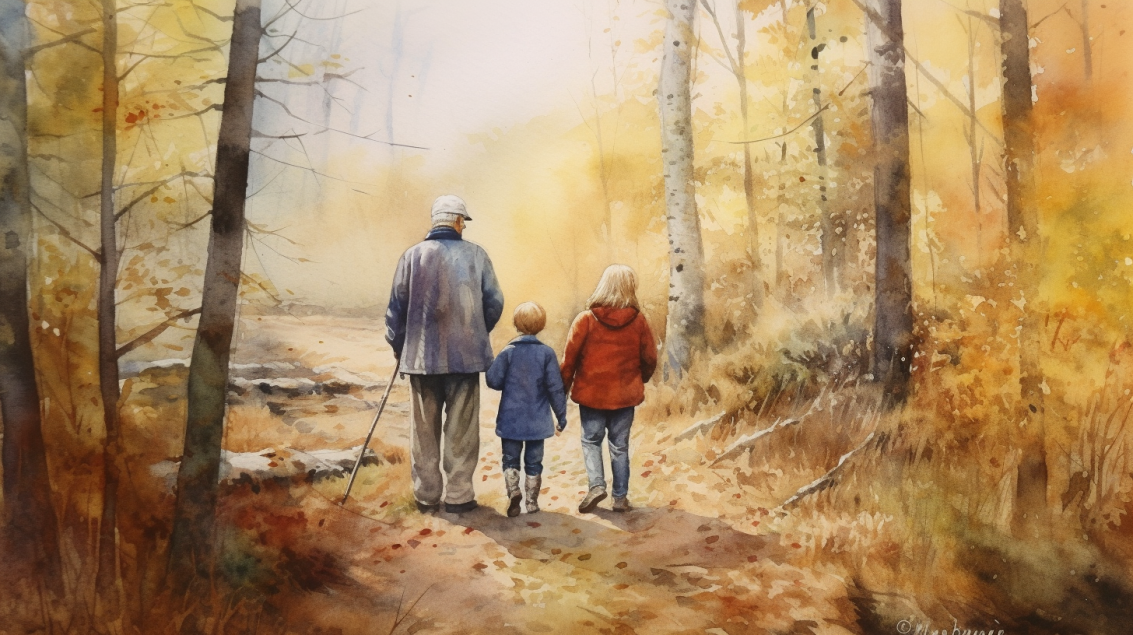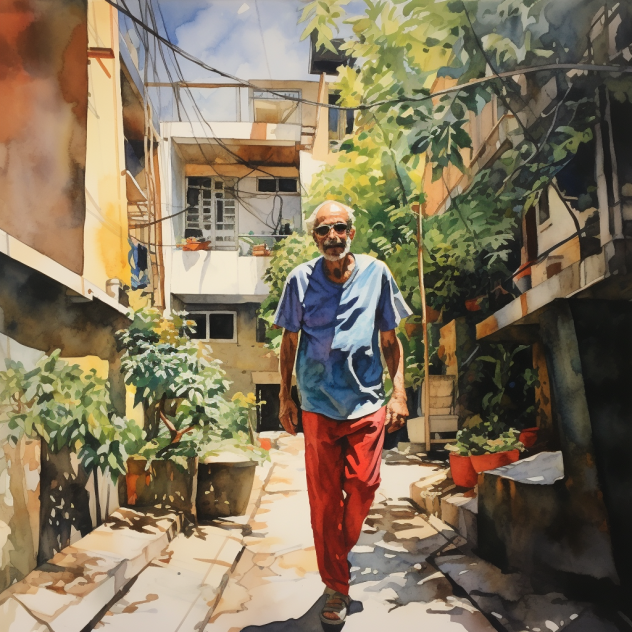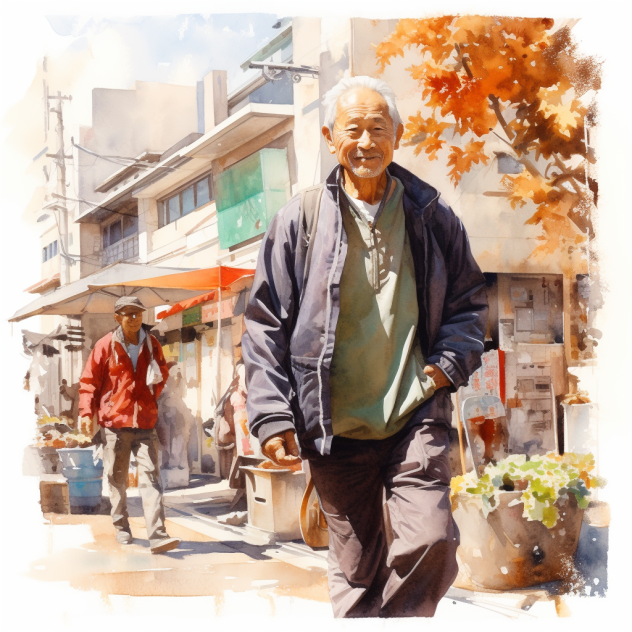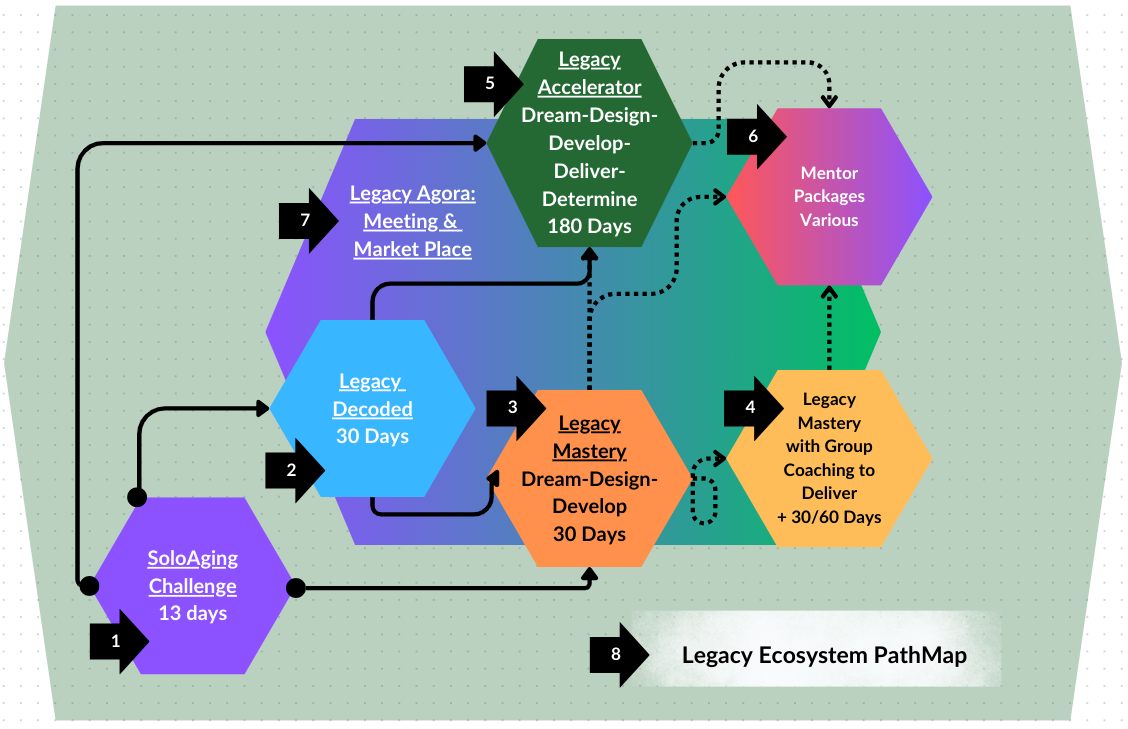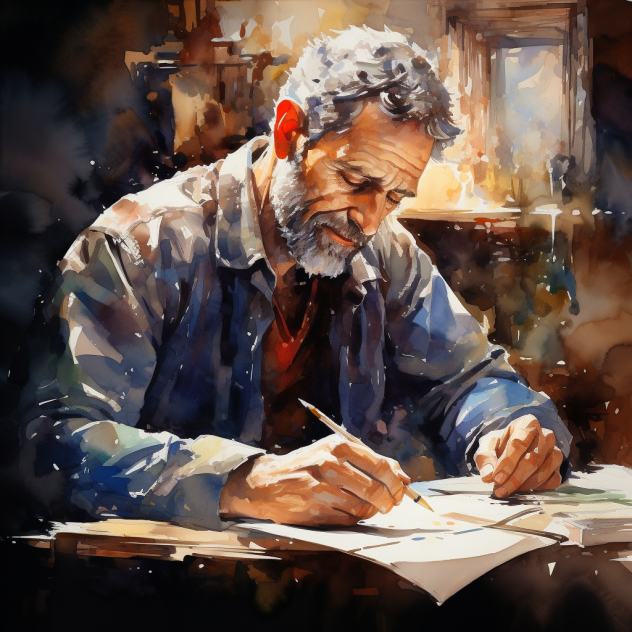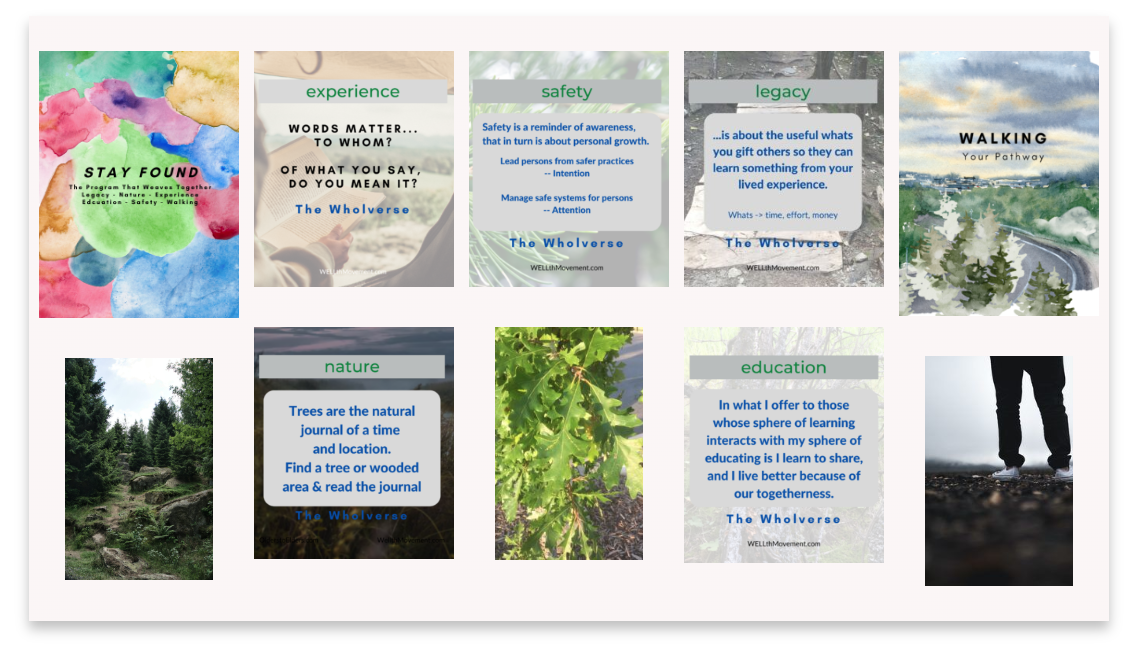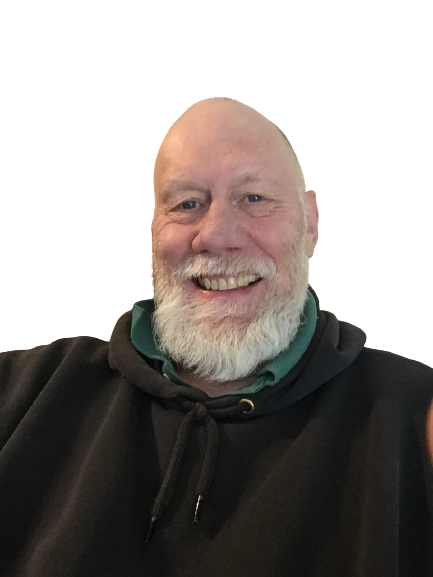Audience: Those shaping and sharing (while living and leaving) a legacy project (with its stories & contributions)
for the world and/or with the planet like… SoloAgers - Empty Nesters - Continuing Educators - Professionals -
Retired Creators - Olders as Elders - Grandparents - Intergenerational Contributors - and YOU!
Walking In
From my research on SoloAging, here are 10 repeating hindrances (not in order) facing SoloAgers:
- Isolation
- Financial Insecurity
- Loneliness
- Lack of Social Support
- Health Decline
- Inadequate Housing
- Loss of Purpose
- Limited Access to Healthcare
- Inadequate Legal Preparedness
- Inadequate Financial Planning
Of these 10, the WELLth Movement for SoloAging Confidently suggests the Legacy EcoSystem Platform-Program-Project-Practices-Products can influence these four directly:
- Isolation
- Loneliness
- Loss of Purpose
- Lack of Social Support
The other 6 are indirectly influenced. However, there are practitioners better suited to deal with them directly. With future blog posts and videos loaded on WELLth Learning TV we''ll introduce you to them.
Outline:
Review each of the four hindrances.
Ask the questions So What? And What Else about each hindrance.
Finish with the ways a Legacy Project counters each hindrance together.
Walking In
As we journey through life's various chapters, the stage of SoloAging, marked by aging without the traditional support network of family or a spouse, presents unique hindrances/challenges.
Recognizing the FIRST Signs of Isolation, Loneliness, Loss of Purpose, and Lack of Support are important to guide the adeption (adoption, adaption) of the personal growth, connection, and fulfillment suggestions SoloAgers can use to flourish in their Next Fifty.
One way to deal with all hindrances is to embrace a legacy project. SoloAgers can discover, shape, and share their legacy project, stories, and contributions, leaving a lasting impact for the world and with the planet while living their later years with purpose and confidence. In this way the legacy project address the hindrances/challenges as passable creeks rather than unfordable rivers.
Note, the hindrances are not in order. However, it's unlikely they occur individually. That is, they often pair up, or more!
Recognizing the FIRST Sign of Isolation Is...
- Physical Withdrawal:
You may find yourself spending more time at home and less time engaging in social activities or outings. - Emotional Distance:
You might feel emotionally distant from friends and family, even when you're physically near them. - Loss of Interests:
Hobbies and interests that once brought you joy may lose their appeal, leading to a sense of disengagement. - Communication Decline:
A reduction in communication, such as phone calls or meetings with friends, can be a clear sign of isolation. - Lack of Support:
Feeling that you have no one to turn to for emotional support or assistance with daily tasks is another indicator.
Tackling Isolation Head-On
1. Prioritize Social Connections
Make a conscious effort to maintain and build social connections. Reach out to friends, neighbors, or community groups. Consider joining clubs or organizations that align with your interests.
2. Embrace Technology
Technology can be a valuable tool for staying connected, especially in the digital age. Video calls, social media, and online forums can help bridge the gap and foster a sense of community.
3. Seek Professional Help
If feelings of isolation are overwhelming, consider seeking support from mental health professionals. They can provide strategies to manage loneliness and address related emotional challenges.
4. Engage in Physical Activities
Regular physical activity not only benefits your health but also provides opportunities for social interaction. Consider joining fitness classes, walking groups, or even local sports teams.
5. Explore Volunteering
Volunteering can be a fulfilling way to connect with others while contributing to a meaningful cause. Look for volunteer opportunities in your community or online.
6. Develop New Interests
Exploring new hobbies and interests can lead to meeting people who share similar passions. Whether it's art, gardening, or book clubs, finding activities you enjoy can foster connections.
Visit the Store to access
support resources:
Recognizing the FIRST Sign of Loneliness Is...
- Emotional Isolation:
You might feel a persistent sense of emotional disconnection from others, even when you're physically in their presence. - Increased Solitude:
You may start spending more time alone and less time engaging in social activities or interactions with others. - Lack of Meaningful Conversations:
A sign of loneliness is when you notice a decrease in the frequency and quality of meaningful conversations with friends and family. - Loss of Interest:
Hobbies and interests that once brought joy may lose their appeal, leading to a sense of disengagement. - Physical and Mental Health Impact:
Loneliness can affect both your physical and mental health, potentially leading to conditions like depression and anxiety.
Strategies to Combat Loneliness
1. Foster Social Connections
Prioritize nurturing existing relationships and building new ones. Reach out to friends, neighbors, and community groups. Consider joining clubs or organizations aligned with your interests.
2. Utilize Technology
Embrace technology as a tool for staying connected. Video calls, social media, and online forums can help bridge the gap and foster a sense of community.
3. Seek Professional Support
If feelings of loneliness are overwhelming, don't hesitate to seek help from mental health professionals. They can provide strategies to manage loneliness and address related emotional challenges.
4. Engage in Physical Activities
Regular physical activity not only benefits your health but also provides opportunities for social interaction. Consider joining fitness classes, walking groups, or local sports teams.
5. Explore Volunteering
Volunteering can be a fulfilling way to connect with others while contributing to a meaningful cause. Look for volunteer opportunities in your community or online.
6. Develop New Interests
Exploring new hobbies and interests can lead to meeting people who share similar passions. Whether it's art, gardening, or book clubs, finding activities you enjoy can foster connections.
Visit the Store to access
support resources:
Recognizing the FIRST Sign of Loss of Purpose Is...
- Lack of Inspiration and Motivation:
You may find it increasingly challenging to find inspiration (within-without) and motivation (without-within) for your daily tasks and activities. - Feeling Aimless:
A sign of a loss of purpose is when you feel aimless, as if you're merely going through the motions. - Diminished Joy:
Activities and hobbies that once brought joy may no longer hold the same appeal, leading to a sense of disengagement. - Emptiness:
A profound feeling of emptiness and unfulfilledness can overshadow your daily life. - Self-Reflection:
Increased self-reflection, which can be both beneficial and challenging, may reveal a sense of purposelessness.
Strategies to Rediscover Purpose
1. Self-Reflection
Take time for introspection to identify your hierarchy of values, hobbies and interests, and "care-abouts" for self and with community. What truly matters to you?
2. Set New Goals//Outcomes
Consider setting new and meaningful goals/outcomes for this phase of life. What would you like to achieve or experience?
3. Pursue Lifelong Learning
Engaging in ongoing education. Learning-Knowing-Sharing can stimulate your mind and provide a sense of achievement.
4. Give Back
Volunteering and contributing to your community can create a profound sense of purpose. Consider how you can use your skills and experiences to make an impact (like mentoring).
5. Maintain Social Connections
Nurturing social relationships and engaging with friends, family, or community groups can offer a sense of belonging and purpose.
6. Seek Professional Guidance
If you're struggling to find purpose, don't hesitate to seek guidance from a therapist or counselor. They can provide strategies and support.
Visit the Store to access
support resources:
Recognizing the FIRST Signs of Lack of Support
- Increased Isolation
Isolation is one of the most prominent signs of a lack of support. SoloAgers may find themselves spending more time alone, with limited social interactions. Isolation can lead to feelings of loneliness and depression. - Emotional Distress
A lack of emotional support can result in emotional distress. SoloAgers may struggle to cope with the challenges of aging and may experience increased anxiety or sadness. - Neglected Practical Needs
Neglected practical needs can be a sign of insufficient practical support. If SoloAgers find it challenging to manage daily tasks or maintain their living environment, it may indicate a lack of support. - Financial Strain
Financial strain can be a sign that SoloAgers lack the necessary financial support. They may struggle to cover expenses or face difficulties in managing their financial affairs. - Declining Health
Declining health can be a result of inadequate health support. SoloAgers may face challenges in accessing healthcare services, managing chronic conditions, or making important health-related decisions.
Addressing the Lack of Support
1. Build a Support Network
SoloAgers can actively seek out individuals and organizations that can provide emotional, practical, social, financial, and health support. Joining social groups, reaching out to friends and family, and seeking assistance from professionals can help build a robust support network.
2. Communicate Your Needs
Clear communication is essential. SoloAgers should feel comfortable expressing their needs and preferences to their support network. Whether it's emotional or practical support, open communication fosters understanding and cooperation.
3. Seek Professional Guidance
In cases where specialized support is required, SoloAgers can consider seeking professional guidance. This can include financial advisors, healthcare professionals, or therapists who can provide expertise and assistance in critical areas.
4. Embrace Technology
Technology can bridge gaps in support. SoloAgers can explore various tools and resources that offer solutions for practical support, healthcare management, and social interaction. Virtual communities and online platforms can provide opportunities for connection and support.
5. Plan for the Future
SoloAgers can proactively plan for their future needs, including financial stability, healthcare decisions, and long-term care options. This planning can help alleviate potential challenges and ensure that the necessary support is in place.
Of the four hindrances affecting SoloAgers, consider the Legacy Decoded Program, in particular the Confident SoloAging Legacy Navigator Project.
It's an introduction to the importance of discovering, shaping, and sharing a legacy project
which in turn provides an approach to counter the hindrances listed above
and/or provide community in which to discuss these hindrances
for reasons of exploring and finding the ways and means
to minimize the hindrances, if not eliminate them.
Click on the image below to learn more:
Asking So What? and Now What?
For each of the FIRST Signs of Isolation, Loneliness, Loss of Purpose, and Lack of Support of SoloAgers
So What? Isolation is the feeling of being disconnected from the world, both physically and emotionally. It can lead to a lack of meaningful social interaction, increased distress, and a higher risk of physical & mental/emotional health issues, including depression.
Now What? Addressing isolation begins with actively seeking social engagement. Joining clubs, community organizations, or online groups can foster connections and create a sense of belonging.
What are your responses to the questions for the hindrance?
/|\
So What? Loneliness is a pervasive emotional state that often accompanies isolation. It can have adverse effects on physical and mental/emotional health, leading to increased distress, anxiety, and a sense of hopelessness.
Now What? To combat loneliness, SoloAgers can explore opportunities to connect with like-minded individuals, family, or friends.
What are your responses to the questions for the hindrance?
/|\
So What? Loss of purpose can result from a lack of meaningful activities and goals. It can lead to a sense of emptiness, apathy, and even depression.
Now What? Regaining a sense of purpose can be achieved through involvement in community activities as an advocate and/or activist.
What are your responses to the questions for the hindrance?
/|\
So What? Lack of support can manifest as a struggle to meet emotional, practical, social, financial, or health-related needs. It can lead to increased distress and challenges in daily living.
Now What? To address a lack of support, SoloAgers can actively build a network of individuals and organizations that can provide the necessary assistance.
What are your responses to the questions for the hindrance?
/|\
So What? Now What? of the Four Hindrances Together
Addressing these four hindrances (challenges) TOGETHER requires a proactive and holistic approach.
One answer lies in embracing the concept of discovering, shaping, and sharing a legacy project.
Discovering Your Legacy Project
A legacy project is an opportunity to leave a lasting imprint that reflects your hierarchy of values, experiences, and contributions for the world and with the planet. It provides a sense of purpose that can counteract isolation and loneliness. To discover your legacy project:
- Self-Reflection: Start with self-reflection to identify your values, interests, and "care-abouts". What truly matters to you? This process can help clarify your purpose.
- Set New Goals/Outcomes: Consider setting new and meaningful goals/outcomes for this phase of life. What would you like to achieve or experience? Having clear motivation-based objectives can reignite inspiration.
- Pursue Lifelong Learning: Engaging in ongoing education can stimulate your mind and provide a sense of achievement. Explore new subjects or hobbies.
Shaping Your Legacy Project
Shaping your legacy project involves translating your "care-abouts" and interests into meaningful actions:
- Giving Back: Volunteering and contributing to your community can create a profound sense of purpose. Consider how you can use your skills and experiences to make a meaningful impact.
- Maintain Social Connections: Nurturing social relationships and engaging with friends, family, or community groups can offer a sense of belonging and purpose.
- Seek Professional Guidance: If you're struggling to find purpose, don't hesitate to seek guidance from a therapist or counselor. They can provide strategies and support. And they could become members of your legacy project. Of what you seek, others seek it as well!
Sharing Your Legacy Project
Sharing your legacy project is about making your contributions meaningful and enduring:
- Documenting Your Journey: Keep a record of your experiences, achievements, and lessons learned. Sharing your story can inspire others and preserve your legacy.
- Celebrate Success: Acknowledge your achievements and accomplishments along the way. Celebrating your successes with your support community can strengthen your commitment.
- Reflect and Learn: The process is iterative, allowing you to learn from your experiences, make improvements, and refine your contributions over time.
The Power of a Legacy Project
A legacy project is a powerful tool for addressing these FIRST Signs.
It allows SoloAgers to discover their "care-abouts", interests, and values, shaping them into meaningful contributions for the world and their communities. Here's how a legacy project can serve as a guide:
1. Connection and Collaboration
A legacy project often involves collaboration with others.
This connection combats isolation and loneliness,
providing a support network of like-minded individuals who share a common goal.
2. Purpose and Meaning
Creating a legacy project inherently provides a sense of purpose and meaning.
It allows SoloAgers to draw upon their life experiences
and contribute to causes they are passionate about.
3. Emotional and Practical Support
Through a legacy project, SoloAgers can seek emotional
and practical support from their collaborators.
This support network can address various needs, from social interactions to daily tasks.
4. Long-Term Engagement
Legacy projects are not fleeting endeavors; they require sustained effort.
Engaging in a project ensures that SoloAgers remain active,
fulfilled, and connected over the long term.
5. Leaving a Lasting Legacy
Ultimately, a legacy project becomes the footprint of a SoloAger's life.
It leaves a meaningful imprint for the world and the planet,
reflecting their values, experiences, and contributions.
Moving Forward
The FIRST Signs of Isolation, Loneliness, Loss of Purpose, and Lack of Support can be formidable challenges for SoloAgers. However, they also present opportunities for personal growth, connection, and fulfillment.
By embracing a legacy project, SoloAgers can find a guiding light through these challenges. They can discover, shape, and share their legacy contributions, leaving a lasting impact for the world and with the planet while living their later years with purpose and confidence
This transformative journey can be a time of renewed self-discovery and the pursuit of new horizons. Onwaord!
Along the journey as you weave your tapestry, understanding StoryScope and Legacy are important concepts and practices. A quick reminder of both follow:
Understanding the StoryScope
Our lives are stories waiting to be told, narratives that unfold with each passing day.
The metaphor of "StoryScope" invites us to view this narrative through different lenses. Just as telescopes reveal the vastness of the universe, microscopes uncover the intricacies of the microscopic world, stethoscopes listen to our vital sounds of living, our StoryScope allows us to explore and find the full spectrum of our daily existence.
Our daily lives resemble a kaleidoscope, with each decision, action, and interaction contributing to the ever-shifting, meaningful pattern.
As SoloAgers and seasoned professionals, you have a unique perspective on life's twists and turns. Your legacy is not only a reflection of your past-present but a blueprint for the future-present.
Legacy: The Useful Whats
Legacy is often associated with material wealth, but it extends far beyond possessions. Legacy comprises the "useful whats" we leave behind, including our time, effort, and money. These elements are the building blocks and seedbeds of our legacy, and how we allocate, plant them shapes the stories we share.
For SoloAgers, who have accumulated a wealth-wellth of experiences and knowledge, legacy is about passing on wisdom and lessons. Your is about preserving your story as it is about empowering others to write their chapters more skillfully. As professionals and educators, your legacy resides in the work you shared, the values you instilled, and the innovations you sparked.
Guide to Programming through WELLth Movement
for SoloLiving-SoloAging: Professionals and ParaProfessionals
If you have a Question and/or Comment
about one or more of the Programs and Projects
in the Legacy Agora EcoSystem and/or the PathMap,
please use this form. TU!
PS: The System and Maps are subject to Edits.
Moving Forward SoloLiving Legacy Life... as a SoloAger
Embracing SoloAging demands both introspection and action. SoloAgers, Empty Nesters, Orphan Elders, Widows/Widowers can navigate this phase with confidence by understanding the core concepts and practices, addressing the challenges, and embracing the benefits.
They can forge a path that is uniquely theirs and one that encompasses personal growth, independence, and the creation of a meaningful legacy.
If You are ready to take the next steps in your Confident SoloLiving, SoloAging journey,
review the Legacy EcoSystem and PathMap, and select your starting point.
Alternatively, book a free call to gain clarity on your path forward.
Your legacy life awaits; embrace SoloAging with confidence.
Transparency: AI-assisted based on priming and prompting! Considerable editing followed.
Please
share - TU!
It's all about sharing the legacy you intend to live (and leave).
For more in-depth insights about:
INVITE Soloaging Olders to be Elders
who discover, shape, and share the legacy
they intend to live and leave Start here
Certification as a mentor Start here
To contact us use our Contact Page
Add your comments - update the insights in your words
- share funnies for all of us to read below the blog list!
Audience: Olders to Elders - SoloAgers - Empty Nesters - Continuing Educators - Professionals -
Audience: Olders to Elders - SoloAgers - Empty Nesters - Continuing Educators - Professionals -
Audience: Olders to Elders - SoloAgers - Empty Nesters - Continuing Educators - Professionals -
Audience: Olders to Elders - SoloAgers - Empty Nesters - Continuing Educators - Professionals -
Audience: Olders to Elders - SoloAgers - Empty Nesters - Continuing Educators - Professionals -
Audience: Olders to Elders - SoloAgers - Empty Nesters - Continuing Educators - Professionals -
